The author of the article is Alexey Petsyk, an astronomy lover from Moscow.
The material was published on the website star-hunter.ru at the personal request of the author of the article.
All rights to text and illustrations belong to Alexey Petsyk.
The author of the translation into English is Ruslan Ilnitsky
Translator’s note is in italics.
Perfect is the worst enemy of Good Enough!
But if we pick up … a telescope and look at the sky
with an assisted sight, we will see two stars,
three stars, four stars …
Best of all, of course, five stars!
Chapter 1
Small school refractor

After completing work on the history of the School meniscus telescopes of the USSR, somehow it turned out by itself that I was interested in school refractors of which in the USSR, as everyone knows, 2 types were produced – Large Small school refractor (Bol’shoy Shkol’nyy Refraktor – BShR) and Small School Refractor (Malyy Shkol’nyy Refraktor – MShR).
It would seem that there is not much to collect here – well, there are two – but this turned out to be true only at first glance. Having dealt with the topic more closely, I found out that the MShR was produced in at least 6 modifications (and the BShR – probably more, until I counted seven), and the development did not go as expected “from simple to complex”, but for some reason the other way around, with what something with an increasing degree of simplification. This article is devoted to the description of the history of the release and “improvement” of the MShR.
I plan to start it with a description of the tactical and technical characteristics of the device, which were the same in all modifications (maybe with the exception of the price). So, please love and favor:
Small school refractor, aka MShR, aka RTM-60
Objective lens diameter – 60 mm
Lens focal length – 600 mm
Lens barrel material – brass (for all modifications)
Relative aperture – 1:10
Fitting diameter of eyepieces – 26.5 mm
Visible magnification with 10mm eyepiece – 60x
Apparent magnification with 20mm eyepiece – 30x
Eyepiece type 10 mm – Plossl
Eyepiece type 20 mm – Kellner
Eyepiece field diaphragm diameter 10mm – 6.8mm
Eyepiece field diaphragm diameter 20mm – 15.8mm
Eyepiece field of view 10mm – 40 degrees
Eyepiece 20mm field of view – 45 degrees
Telescope field of view with 10mm eyepiece – 40 arc minutes
Telescope field of view with 20mm eyepiece – 90 arc minutes
Theoretical resolution – 2.30 ”
Limiting magnitude – 11m
Telescope rotation angle:
- right ascension – 150 °
- in azimuth – 360°
Telescope weight in case:
- without tripod – no more than 9.2 kg
- with a tripod – no more than 15.2 kg
Price – 66 rubles 60 kopecks
The telescope lens is a glued-on achromatic doublet, one lens is a positive biconvex one made of a crown, the other is a negative meniscus made of a flint. Thanks to three thin aluminum spacers glued to the meniscus lens, a constant gap is maintained between the objective lenses.
The telescope was supplied with the following accessories as standard:
-metal lens cover;
-metal diaphragm for the lens, reducing the telescope aperture to 40mm;
-glass aperture solar filter in a separate metal frame;
-two eyepiece solar filters – they are supposed to be used in conjunction with the diaphragm, with a limitation of the time of continuous observation to 3 minutes and technological breaks for cooling the telescope up to 5 minutes. The filters are installed under the plastic cap of the eyepiece, which must be unscrewed for this;
-Sun observation screen made of 10mm plywood, dimensions 150x150mm and painted black. The screen is attached to the focuser on a special rod with a diameter of 8mm and a length of 360mm, which at one end is screwed into the movable part of the focuser. All the telescopes I have seen have steel-colored rods, but the only time I have seen a rod is golden. Maybe it was a “jubilee model” of the telescope, or was the rod gilded for special services? I do not know. )));
-diagonal mirror;
-two eyepieces with focal lengths of 10mm and 20mm, having black carbolite caps screwed on top with markings on which the eyepiece focus is indicated (F10 and F20). These eyepieces are identical to those supplied with the BShR. It should be noted that eyepieces with gray caps were also produced – I came across such a modification only once (in a telescope with a “golden rod”), a piece very rare.
-instruction manual and passport-certificate (first modifications);
-tripod, 125 cm high to the support platform, made of double pine slats 14x40x1250mm.
The telescope was packed in a solid wooden box, the lodgements of which were sheathed with felt or soft cloth – this box ensured the good condition of many instruments that have survived to this day and their complete (or almost complete) completeness. There are fewer tripods left, and finding a tripod in good condition is much more difficult than the telescope itself.

The production of the MShR was probably started in 1956 – that year the production of the MShR was organized and I assume that the MShR began to be produced at the same time, well, or approximately at that time. Although I have no exact confidence in this. The oldest telescope in my collection is 1962. The production of the MShR continued at least until 1993, but even here I cannot say for sure. If someone has data on the years of production of various modifications of the MShR – please write: petsyk@mail.ru
The MShR was produced in the city of Zagorsk (now Sergiev Posad), at the School Instrument Making Plant No. 6 of the Glavuchtekhprom, as reported by the corresponding nameplate attached to the mount stand. The plant began its history as far back as 1933, and now, unfortunately, it has been demolished – now there is no need for school instrumentation, the state has other goals. The telescope was mounted on a simple azimuth mount equipped with clamping screws that allowed the telescope to be fixed in azimuth and in height. There were no fine motion screws on the mount. The mount was mounted on a fairly high tripod made of thin pine slats, most often painted yellow. The tripod was not very rigid.
Regarding the method of assigning serial numbers to the first releases of telescopes, I have no information. I suppose that two options are possible: the first is that the serial numbers were reset to zero with the release of the next modification of the MShR; the second – the numbering started anew every year. I believe the second option is closer to the truth, because. judging by the number of ads for sale, there were many more MShR produced than BShR, but I don’t remember seeing MShR with numbers beginning with three thousand or five. And such numbers are found in the BSHR. In addition, I saw the MShR of the first modification, whose serial number was No. 773, and the year of manufacture was 1961, while MShR 1 in my collection has serial No. 55, and the year of its manufacture, according to the instructions, is 1962.
Until the moment when I was able to get to know the Small School Refractor (MShR) better, I was captivated by the prejudice that this telescope is simple and primitive, made somehow, dull and unattractive. This opinion somehow gradually formed in me after reading reviews and descriptions on the Internet from people who watched this tool, more often in childhood, and then switched to more modern equipment.
Unfortunately, now sometimes there is such a, let’s say, consumer attitude to history, when the opinion is voiced: “What is good about them, in school telescopes? There is no coating, the eyepieces are poor, the mount is primitive and in general … “It is surprising that they are trying to present exclusively consumer expectations of the current day to historical (or simply rare) things, saying that a modern telescope made in China shows much better. then I have not come across opinions that (exaggerating) an 18th century flintlock pistol is complete nonsense, neither accuracy, nor range, nor rate of fire. Either it is a modern Magnum or Colt with serious face. I cannot understand what motivates the authors in this case, but reading such opinions I am amazed to the extreme.
Maybe school refractors will lose to the Chinese in optics (although not a fact), because did not do enlightenment on them and the eyepieces were also not super, but the elegance and reliability of the mechanical part, especially the first issues (then they spoiled everything) is simply mesmerizing. How well done, smoothly, metal. This is not a plastic “peephole” made by the Chinese to maximize profits. And if the “comparators” are to the end honest with themselves, then we need to compare the MShR with 60mm Chinese telescopes on azimuth mounts, shaking like jelly. Not with 60mm apo on EQ6 mount.
MShR is a wonderful collectible. The appearance of the telescope may well decorate the interior of the house, which instruments from my collection are successfully done at the summer cottage – unfortunately, in a city apartment there is simply no place to accommodate such a number of exhibits.
When I bought the first MShR, which happened partly by accident – I saw an ad on Avito (Russian site for the sale of used goods) and bought it, I didn’t even think that I would end up collecting them. Moreover, I did not know then that there were several modifications of the MShR – I had heard only about two that differed in the focuser design. After buying the “first-born” I set out to buy the “second” MShR, and looking through photos in advertisements for sale, I began to notice various design features of different MShR modifications, of which there were six in the end. Just enough for a small but beautiful collection. In total, the search and acquisition of instruments took more than 2.5 years – the first telescope was purchased in December 2017, the sixth in June 2020. Probably it was possible to cope with it faster, but I wanted to find copies in good condition and, if possible, complete, which is not always easy to do.
After receiving the first purchased telescope, I was amazed by its wonderful appearance, some kind of harsh beauty, which, of course, was facilitated by its excellent preservation. Having put it in a room in the country, I walked by and admired. It’s funny that it turned out that the very first telescope in the collection turned out to be almost the latest modification of the ones produced, i.e. I began to collect the collection from the end. But nevertheless, I will begin the description of the collection with the very first modification of the MShR, the existence of which I did not even suspect until I found out about it by chance, having stumbled upon a video describing the telescope on YouTube.
MShR of the first modification (found in Moscow)
The telescope has the following features: the mount, tube holder, focuser and diagonal mirror are all painted black. The structure of the paint is the same as that of the BShR of the first issues – embossed, matte. The telescope tube is painted white. There is a thickened belt on the mount in the place where the screw for fixing the position of the telescope in azimuth is screwed in. The stand itself consists of two parts – the lower one has a Morse taper No. 3 inside and is put on the tripod pin, being stationary on it – the telescope is rotated in azimuth due to the second, upper part of the stand. The smoothness of the turn is high. The screws that fix the telescope direction on the mount have comfortable black handwheels made of carbolite of large size, and therefore there is no problem to fix the desired position of the instrument. The instructions for this telescope are dated 1962.
The focusing tube of the MShR is made of iron and nickel-plated brass (the brass is the part where the diagonal mirror is inserted), the focuser is made of aluminum. Three coarse calico strips are laid longitudinally between the body and the focusing tube, which ensures a very high smoothness of the focuser – if you compare it with the latest modification of the MShR, it is like a “Pullman carriage” and a “wooden cart”. Focuser knobs, large enough, comfortable, serrated. What is called – “grasping”. The focuser provides the ability to adjust the pressure level of the toothed axis (by inserting/pulling out cardboard spacers between the focuser body and the focuser toothed axis lock) and to remove the focusing tube backlash by tightening the focuser body with two M5 screws – the focuser has a longitudinal slot at the bottom. The focuser is attached to the tube with three M4 screws spaced 120 degrees apart. Focuser travel 80 mm.
The eyepieces of this MShR have black-painted brass barrels. The diagonal mirror is thoroughly manufactured, its barrels are of significant thickness. The lens barrel is brass, screwed into the tube by a thread and has a serrated belt for easy screwing. To aim the telescope at an object, two diopters are used, mounted on the tube and allowing adjustment both to the right and left (both diopters) and up and down (rear diopter). The serial number of the telescope was marked on the front diopter. The telescope was accompanied by instructions and a certificate indicating the resolution of this particular tube. As far as I know, in the future, presumably from modification No. 4, they stopped certifying each tube and wrote something from the series “resolution no more than 3.5 seconds of arc” in the passport.
I did not see the original tripod from this MShR, but I know that in the first modifications of the MShR the tripod platform was cast from silumin, the vertical axis was Morse taper No. 3 (ensured the absence of backlash when installing the telescope mount), the legs were presumably pine (although the first MShR were completed lacquered beech tripods, but I have no information about the first MShR tripods). This telescope was delivered in a box painted green, which is uncharacteristic – the boxes were usually black. The instructions say that the painting was done with green varnish. From time to time, the surface of the varnish has gone a kind of moire, as in old paintings. The side walls of the box are made of boards, not plywood, it is equipped with suitcase latches with internal locks and a brown suitcase handle – apparently the developers had their own ideas about what design is. External dimensions of the box (LxWxH) 682x222x165 mm. This is the rarest (one might say – the rarest) modification of the MShR (I know about three copies), apparently not a lot of them were released, immediately starting the process of “improvement”.
Manual for the telescope MShR (RTM-60) of the first modification

2. MShR of the second modification (found in Astrakhan)
This telescope differs from the first modification in that the mount, focuser and diagonal mirror are painted in hammer gray (this color of these parts was mainly used in this and in all subsequent modifications of the MShR), and the tube is ivory. The eyepiece barrels were made of iron, not brass. They are painted in the same way as on modification No. 1 – in black. The drawer has latches without locks, the drawer itself was painted black with an insignificant sheen, and the paint also has the characteristic moire of an old painting by Rubens. Whether it was done on purpose or so time worked on the box – I don’t know. The outer dimensions of the box (LxWxH) have not changed – 682x222x165 mm. I also do not have a tripod from this MShR.

3. MShR of the third modification (found in Taganrog)
The third modification differs from the second modification in that a thickening belt was removed from the middle of the vertical mount, where the fixing screw was screwed. In addition, a light gray color began to be used in coloring the telescope tube. In general, the first, still timid steps to “improve” the telescope were made in the direction of simple material savings, without deteriorating the general consumer properties of the instrument. The shipping box is the same as that of modification # 2, although it should be noted that I came across a variant of the green color of the box, as in modification # 1, but I do not know if this is the original box, or for this telescope it was simply replaced by box from the first modification. I don’t have a tripod from this telescope. Based on the packing slip found in the box, the telescope was produced in 1964, i.e. The “improvement” proceeded at a rapid pace. According to my information, this modification was produced at least until the end of 1972.
The focuser was damaged – the carbolite part holding the focuser axis was crumbled. I had to glue it with a second glue and make a reinforcing plate of 0.8mm galvanized steel on top. Therefore, the photo is not quite the original type of focuser.
Manual for the telescope MShR (RTM-60) of the third modification

4. MShR of the fourth modification (found in Moscow)
In the fourth modification of the MShR, an inquisitive design thought, apparently driven by the desire for quarterly progress, went much further and the changes in the telescope design were more significant. To begin with, the focuser design has been significantly changed – its appearance has changed, it has lost the ability to adjust the preload of the gear axis of the drive. The adjustment of the backlash of the focuser tube has been changed, which is already implemented with one M4 screw, not two, and this screw works for unclamping, and if the eyepiece tube is already loose, it is unclear how to fix it. The part of the focuser, which used to be brass-nickel plated, has become just metal and not shiny, although it seems to have some kind of coating. The eyepiece tube is noticeably dangling in the focuser, the smoothness of focusing has become worse, the focuser handles have changed their shape and subjectively become less comfortable. The focuser travel has been increased to 100mm.
The base color of the tube painting in this and subsequent modifications has changed completely and became light gray; the noble ivory was no longer used.
The mount has become thinner and more solid, and therefore the telescope rotates directly on the vertical axis of the tripod, which has lost its Morse taper № 3 and has become cylindrical. The nameplate has slightly changed the design and has moved from the side surface of the mount to the lower part of the tube holder, to the area of the screw fixing the telescope tube in height. The inscription with the name of the manufacturer on the nameplate is still preserved.
I have no native eyepieces and a diagonal mirror from the fourth modification (a diagonal was found from another MShR, paint color different from mine), but I believe that the eyepieces were already the same as those of modification № 5 – silumin, unpainted. The diagonal has lost the solidity inherent in the previous modification, both as a whole and the fastening barrels in particular, and began to be made of thin and fragile silumin – I was convinced of its fragility from my own experience, trying to tighten the petal of the diagonal of the sixth MShR modification falling from the focuser. Before I could blink an eye, it broke off. I managed to glue it back with a second glue, but you need to use the diagonal very carefully, there is a risk of breaking the petal again.
The telescope box has become smaller in size (LxWxH – 645x217x142mm,) the quality of its coloring has deteriorated – it is painted with a dull black matte paint. Latches are also subjectively worse in quality. The reduction in the size of the box made it impossible to fit the telescope with the installed diagonal mirror; the length of the telescope does not fit into the box.
And icing on the “cake of perfection” – the thickness of the metal from which the diopters were made was reduced from 2 mm to 1.5 mm – to save money, so on everything!!! In addition, the serial number of the telescope tube was no longer stamped out on the front diopter.
I was lucky to get this MshR together with a tripod – it is made of pine and painted in a bright yellow color. At the ends of the legs there are special conical stops with a U-shaped base, which prevent them from “moving around” and fixing the tripod rails. The same purpose is served by the hooks installed in the middle of the height of the legs, on which a fixing rope or chain was apparently put on – there is no data on how this is implemented. In the BShR, a three-beam chain was used (and I managed to find it), but there is no information on the MShR. Even in the photo, I have never seen the standard mount of the legs. The top of the tripod is stamped from 2mm steel. The tripod legs are clamped using a wing and a long screw. To prevent the screw from spinning, it has a special risk under the head (and on the support platform there is a corresponding groove), and so that tightening the screw does not cause deformation of the support platform of the tripod, a piece of metal tube is inserted (put on the fixing screw) between the legs of the leg (put on the fixing screw). A black plastic cap is put on the screw head. The vertical axis of this tripod, on which the telescope mount is put on, has a cylindrical shape, its height is 94 mm, and its diameter is 22 mm. In the upper part it has a grooved ledge where the fixing screw of the mount abuts. Due to the cylindrical axis, the telescope is noticeably dangling on the tripod – it is necessary to loosen the fixing screw and it immediately strives to bend over. Therefore, aiming with it should not be very easy.
While restoring this tripod, I tried to tighten the screws securing the legs of the legs and found that a lot of screws are scrolling, and in some I simply cannot insert a Phillips screwdriver – the slots are initially defective, and meanwhile the screws are “screwed in”. Hence, I have an assumption that some of them could have simply been hammered with a hammer, so it is not surprising that there were complaints about the rigidity of the tripods. Moreover, the screws used were short, only 10 mm. As a result, many screws had to be replaced with modern ones. The rigidity of the tripod immediately increased after that. There was, of course, the idea to tighten the original screws in new places (for this it is enough to shorten the tripod legs by 10 millimeters), but I did not do it. I decided to keep the original dimensions of the structure.

5. MShR of the fifth modification (found in Staraya Russa)
The prize for the “improvement” of the telescope was apparently received, so in the fifth modification of the MShR the designers decided not to stop there and went even further.
The brass shank of the focuser was replaced with a silumin one, the wide lodgment for fastening the tube was replaced with a small platform with two screws fastening it to the tube, and the metal of the “improved platform” became significantly thinner (the thickness decreased from 3 mm to 2 mm). But still the telescope remained strong – in the photo of the open box of this telescope, on the right side of it, you can clearly see the trace from the focuser tube, which she left when the Boxberry (russian delivery service) staff threw (in other words, I will not pick up) the box during the shipment. Before sending the instrument to me, judging by the photo, there was no mark. In general, I highly do not recommend using this company to send something fragile – you can safely send only dumbbells, but, for example, from a sledgehammer, it is better to remove a wooden handle. )))
The manufacturer’s nameplate lost the name of the manufacturer, only the emblem remained. Silumin eyepiece barrels are unpainted.
The design of the tripod most likely does not differ from modification № 4.

6. MShR of the sixth modification (found in Orel)
This modification differs from the fifth model in that the shape of the handwheels of the handles fixing the direction of the telescope in azimuth and in height has changed, they have become more “slippery” and, in addition, they have noticeably decreased in diameter, which made it difficult to tighten the screws even I – I can’t imagine how a schoolboy could cope with this, because the telescope is not balanced and, when directed to the zenith region, it strives to tilt back.
Another difference was that the color of the telescope began to allow for variability – in addition to the standard light gray color, gray-blue and gray-cream were used, and the tube, focuser, and mount post were also painted in these colors. There are also examples of MSHR with a white tube, the focuser and the stand of which are painted in hammer gray.
The third difference was that the handle of the telescope drawer became not a suitcase covered with leather, but simpler – plastic.
A change was also made to the tripod design – the landing axis again became conical (base diameter – 24 mm, tops – 22 mm), which made it possible to eliminate the backlash of the telescope landing. This is the only change aimed not at deteriorating the telescope’s consumer properties, but at improving them that I have encountered. The tripod is painted in a calmer beige color.
The telescope was produced at least until 1991. The date of the start of production is not known – there is data on the release of this modification in 1986.
Manual for the telescope MShR (RTM-60) of the sixth modification

Update from December 2021
MShR of the seventh modification (not yet in the collection)
The fact that a telescope of this type is a separate modification of the MShR, I learned from one of the readers of this article, after its publication. Although in the process of searching for exhibits for the collection I came across telescopes of this type, but I did not pay attention to them, considering that tripods were someone’s handicraft. Well, really, they look like they were piled on their knees, made of metal and sticks. He was also indignant – “Why did they saw off half of the telescope mount stand !?” But it turns out that in the “dashing 90s”, with which they like to scare us so much now, the Small School Refractor was also produced, only in a very cut-down version. The vertical pole of the telescope mount was cut by about half, and instead of a tall tripod with wooden legs, a low table tripod was made, about 50 cm high, the legs of which were made of fiberglass. According to the owner, there were big problems with the stability of this tripod. During the observations, a continuous struggle was waged against the shaking of the telescope: a light breeze or touching a pipe or tripod led to strong “non-shaking”. How could an astronomical instrument be fitted with such a flimsy tripod? There can be only one explanation here, under the auspices of which the MShR was “improved” all the time of its production – the maximum cost savings and the same maximum disregard for users. Such is the “last breath” of the school optical industry of the USSR.
The telescope’s passport contains the date of manufacture: either 21.1. 1993 or 2.11.1993. (it is difficult to determine unambiguously by the stamp). The scope of the telescope was standard: 2 eyepieces (10 and 20 mm), a glass solar filter for a lens with a diaphragm, a rod with a screen for observing the Sun in projection.

This is the end of the glorious path of production of the Small School Refractor, such telescopes are no longer produced in the Russian Federation and are unlikely to be produced in the foreseeable and not very future. It remains to write the history of the Big School Refractor (BShR), which has gone the same thorny path to “perfection” and the history of school telescopic construction in the USSR can be considered complete, therefore …
To be continued…
Petsyk Alexey.
Amateur astronomer from Moscow
Useful links and documents:
- Brief history of School Instrumentation Plant № 6: http://www.kopeika.org/raznoe/zvjozdy-i-ternii-istoriya-zavoda-shkolnogo-priborostroeniya
- Overview video of MChR modification № 1. https://www.youtube.com/watch?v=x0sROYxrjTA














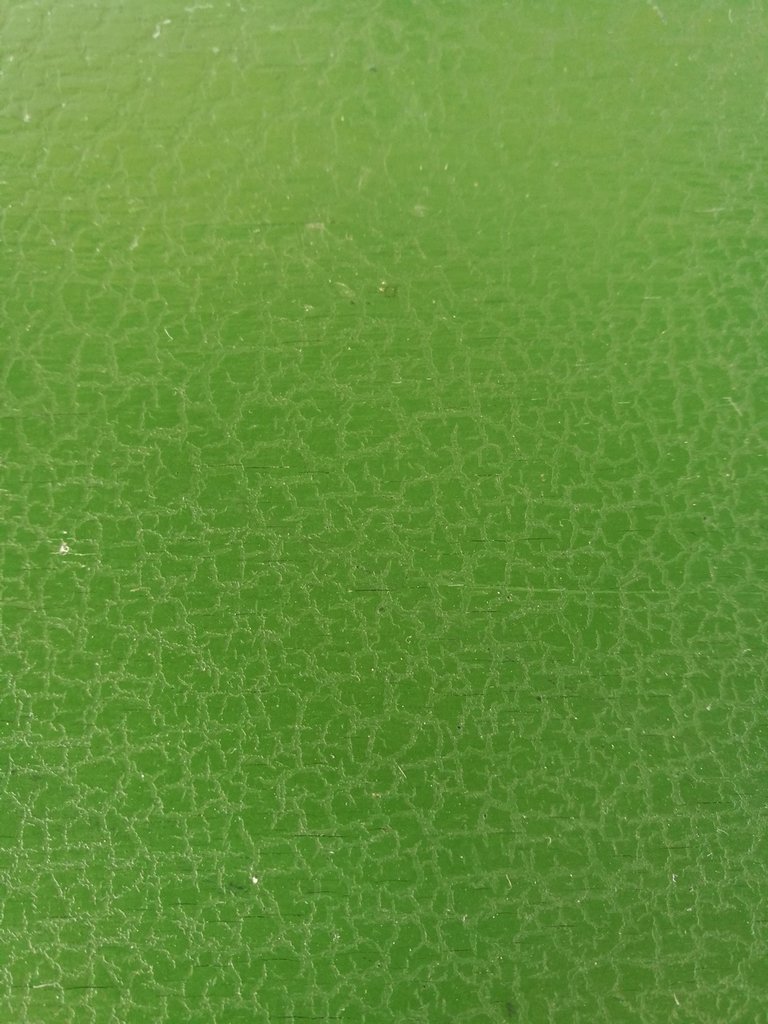


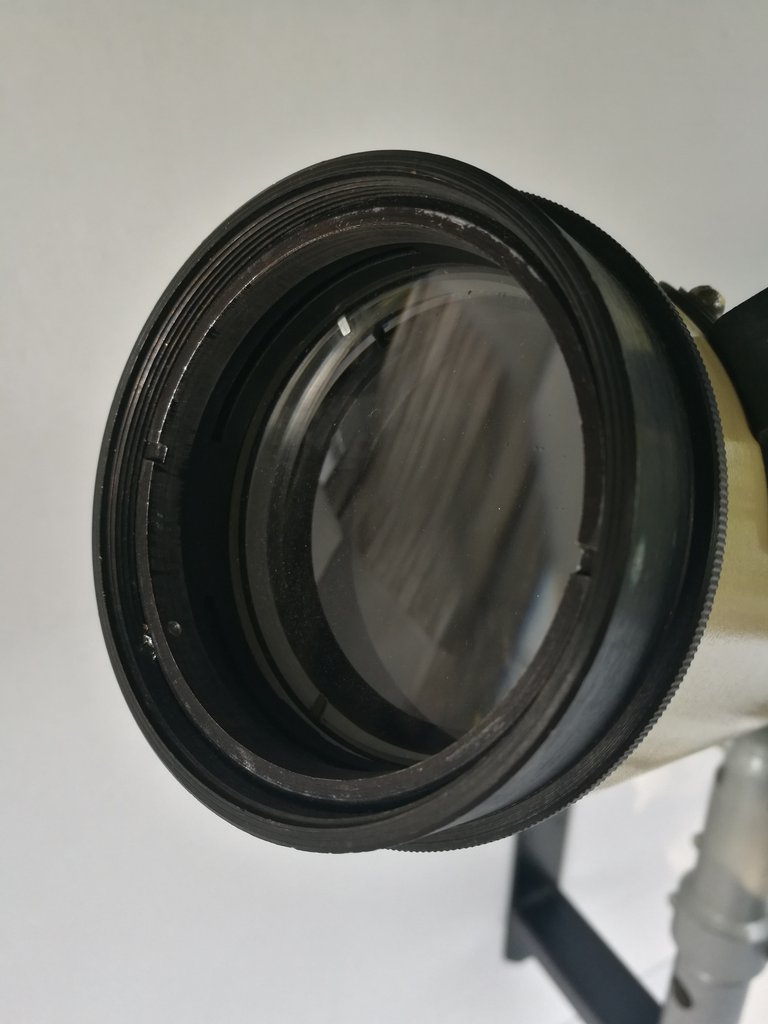



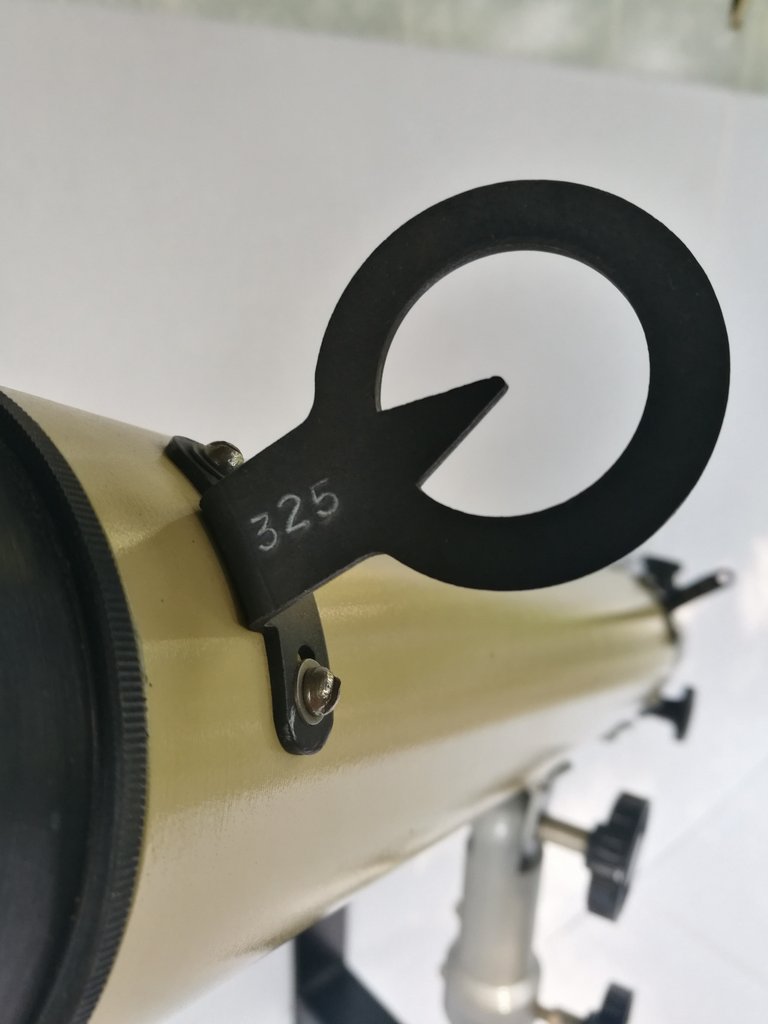









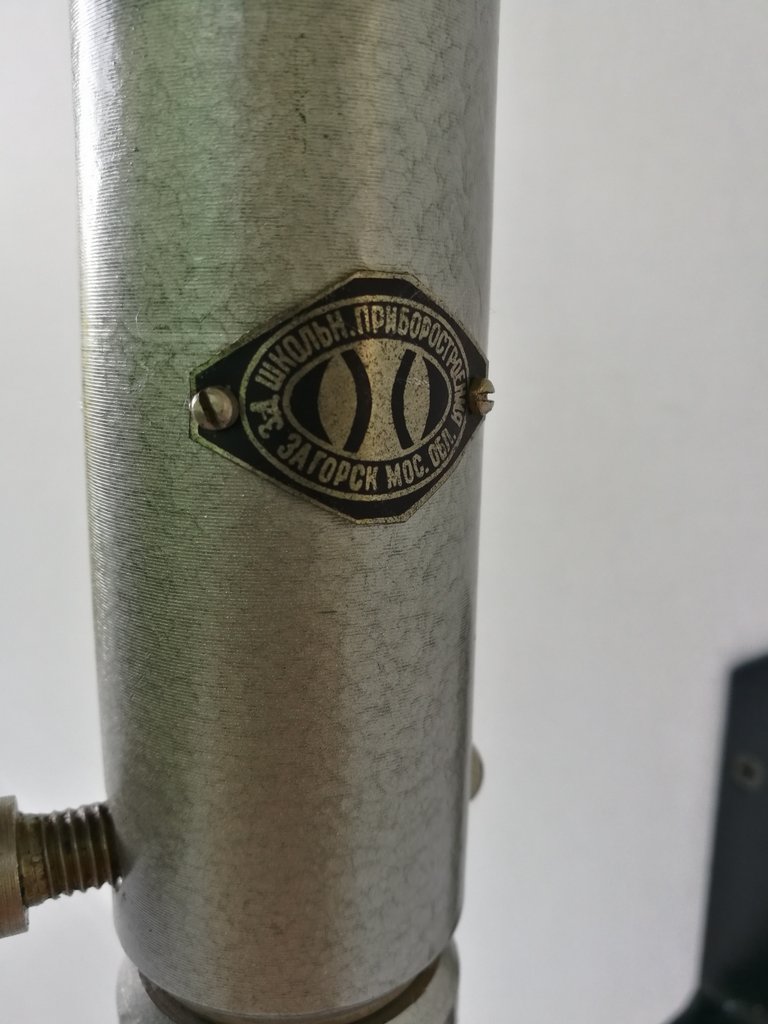



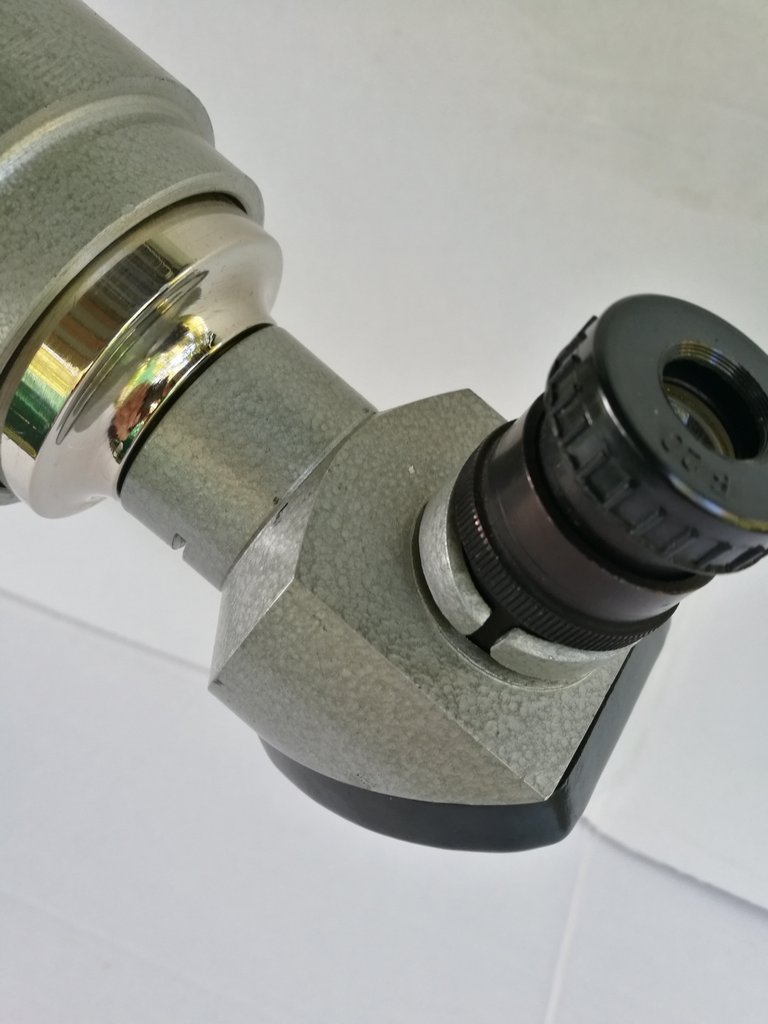




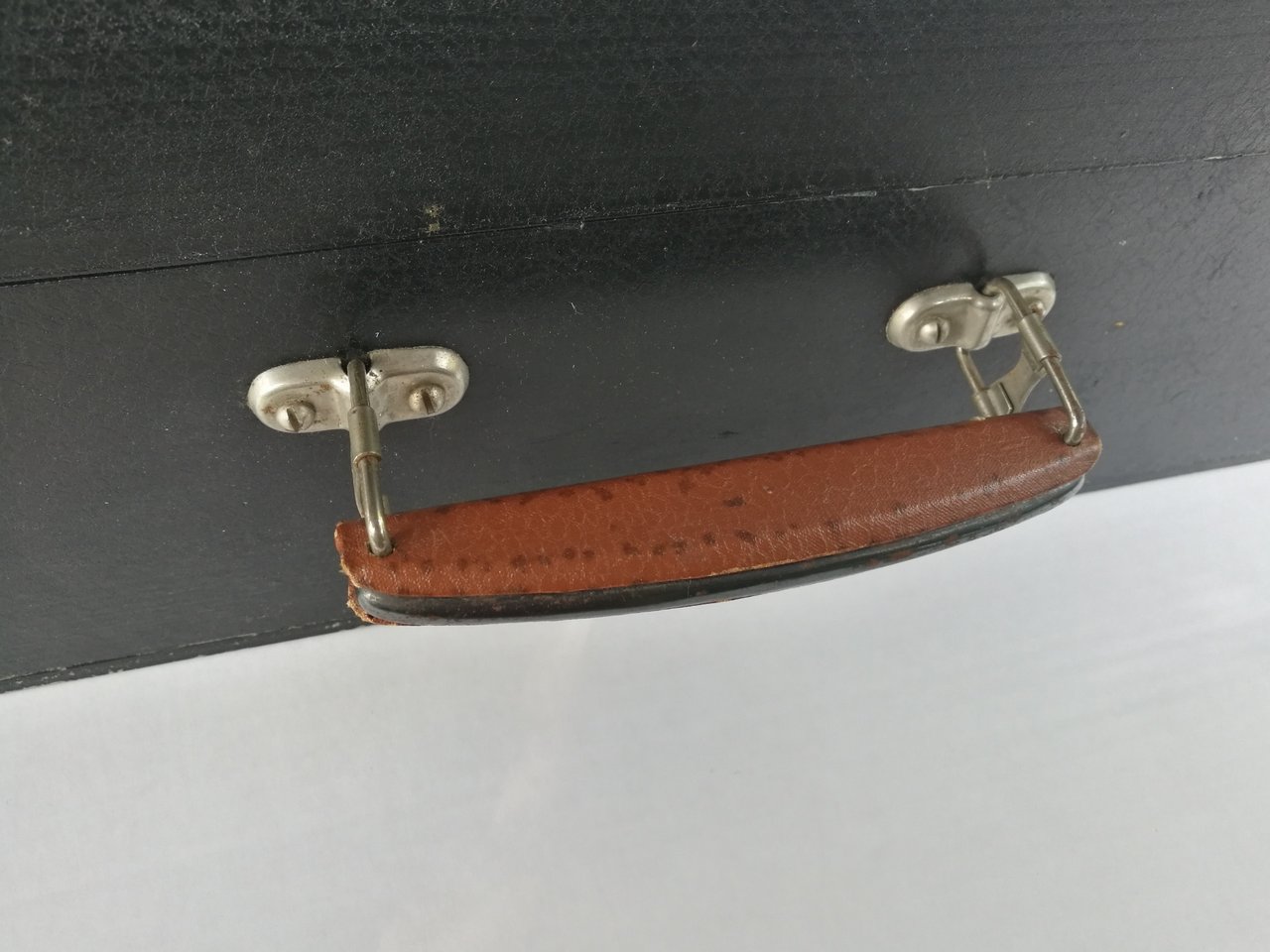


















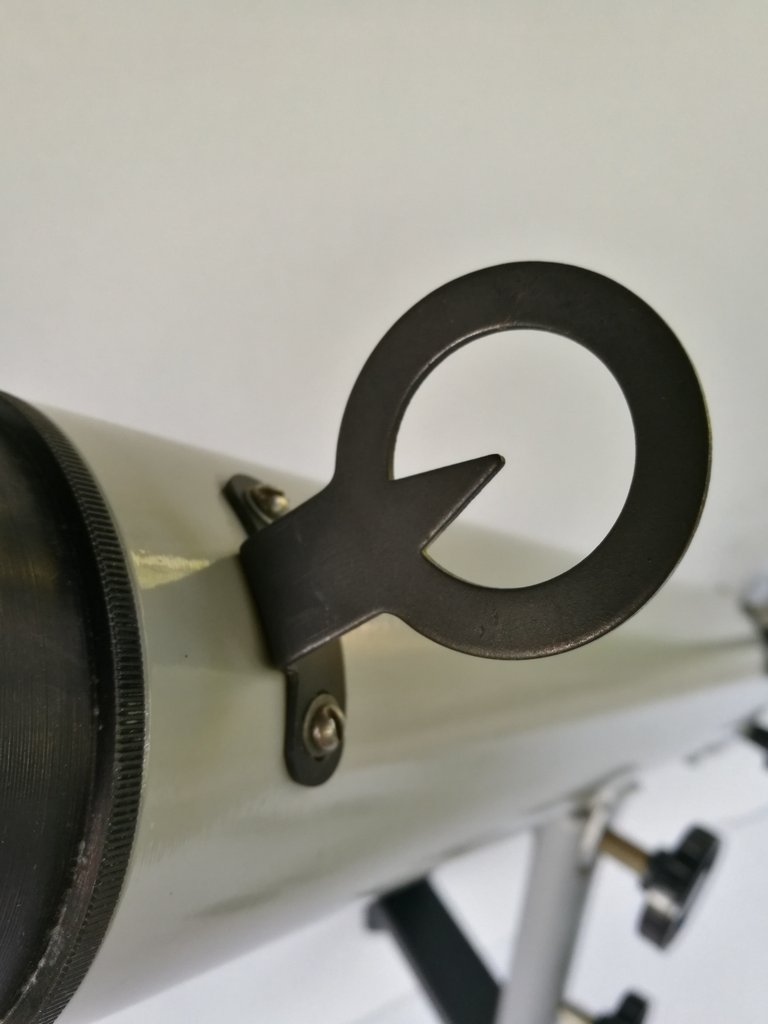







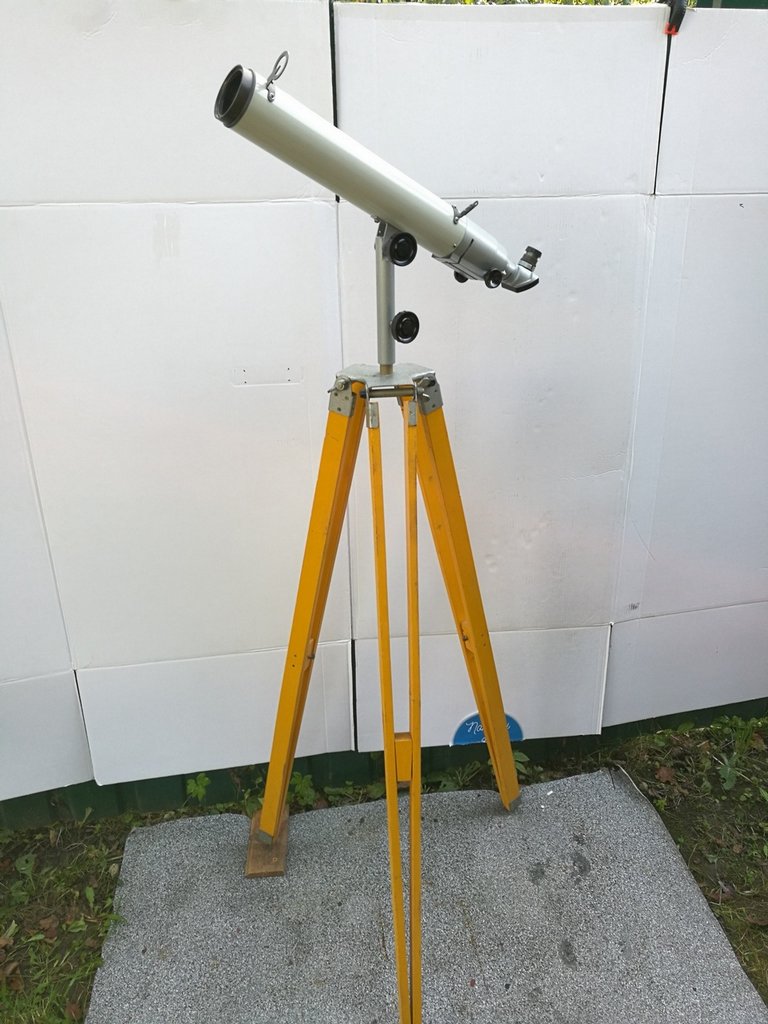








































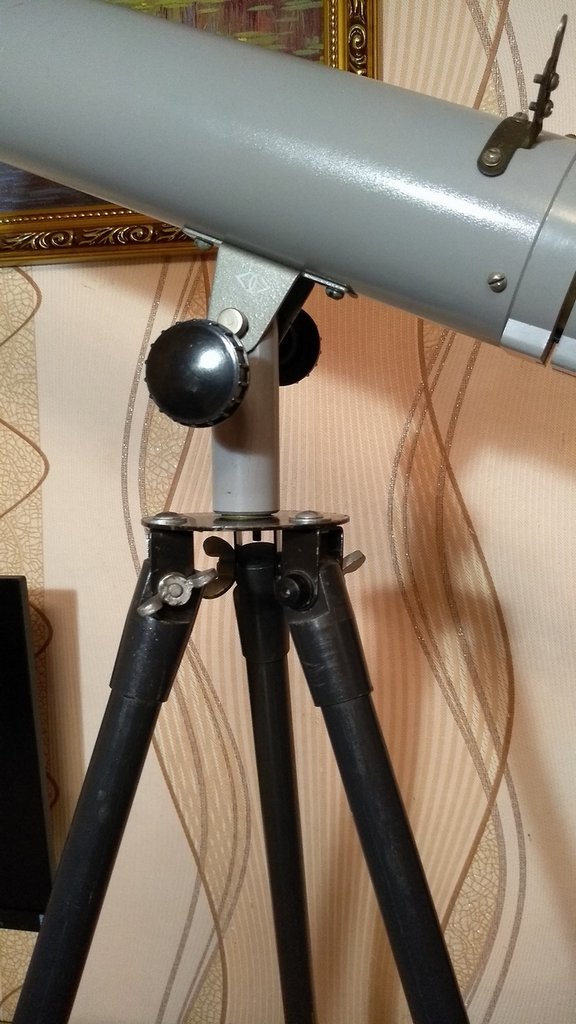



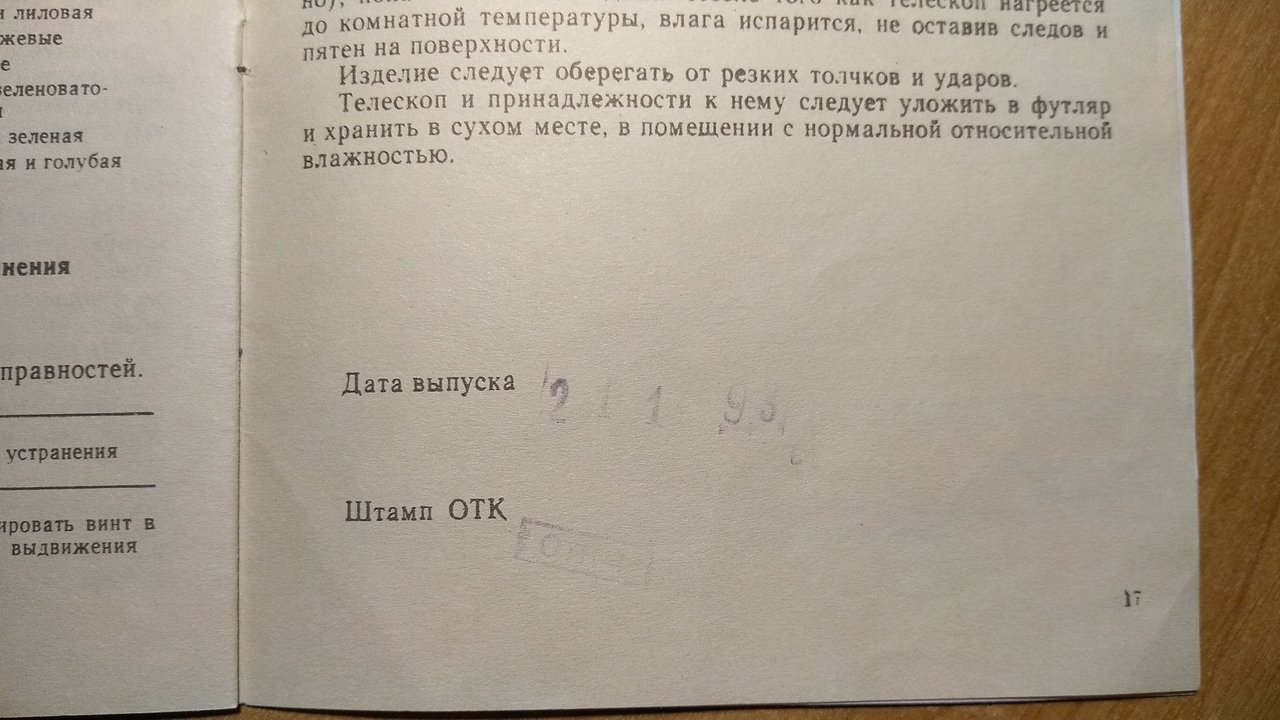
Огромное спасибо! Очень информативно
если кому то нужен данный мшр первой модификации – пишите
Ваше предложение еще актуально?
отлично.. очень хорошая статья.. любители любят почитать о доступной оптике.. теперь бы продолжения о 80 мм..
Отличная статья. Спасибо
В 10 классе, весенними вечерами мы собирались около школы и смотрели в такой рефрактор на Луну! Астрономию преподавал директор школы Арюткин Николай Васильевич. Он окончательно и бесповоротно привил любовь к небу… Незабываемые времена.
Необыкновенно интересно! Жду продолжения)
Автор статьи обещал подготовить материал про БШР. Ну только тогда, когда будет время. Будем ждать с нетерпением
Работаю потихоньку над продолжением. Но муза – дама капризная ))) Надеюсь осилю… )))
Имеется в распоряжении МШР 1992 г. выпуска. Но уже деревянного ящика и штатива не было. В качестве штатива была пластиковая треножка высотой около 40-45 см.
В статье есть мой емейл. Если не затруднит – пришлите, пожалуйста, фото. Хотелось бы глянуть на эту модификацию. Никогда не слышал о настольном штативе для МШР. Он действительно оригинальный, а не приобретен отдельно?
Да, оригинальный, но этот штатив был переделан в более подходящий и устойчивый: от родных ног была отделена вертикальная ось с площадкой и прикреплена к более прочной треноге. Если найду остатки “родных ног”, то вышлю фото. Оригинальным штативом было пользоваться просто невозможно из-за его небольшой высоты и хлипкости.
Спасибо большое за интересную статью. Узнал много нового. Тоже мечтаю приобрести МШР ранней модификации. МШР был моим первым телескопом и оставил самые приятные впечатления, тем самым “заразив” меня любовью к астрономии
Ностальгически любопытно читать, долгое время наблюдал в РТМ “6-й модификации”.
Поправьте, пожалуйста, ссылку на вторую инструкцию, а то она идентична первой.
Спасибо, что сообщили. Исправил.
Не, ну школьный микроскоп – это понятно. В него можно посмотреть и что-то да увидеть, а тут у меня только один вопрос… Кто и, самое главное – когда, им пользовался? ?
Я что-то не припомню, чтобы школы по ночам работали ??
В 60-е годы прошлого века наш учитель физики и астрономии выносил на школьный дворик БШР и мы по вечерам приобщались к наблюдениям.. Для тех, кто хотел, телескопы в школах были.
Да, Владимир, вы правы. Нас тоже в 73 – 74-м годах физик собирал в 22 часа в самом темном месте района – на насыпи старого моста через речку, который уже не функционировал – смотрели на Луну, Марс, Венеру. Телескоп был, кажется, МШР. Это было обязательно, ходили все с удовольствием, никто не пропускал.
Отличная статья как с точки зрения изложенных исторических и технических фактов, так и с литературной точки зрения. Приятно читать.